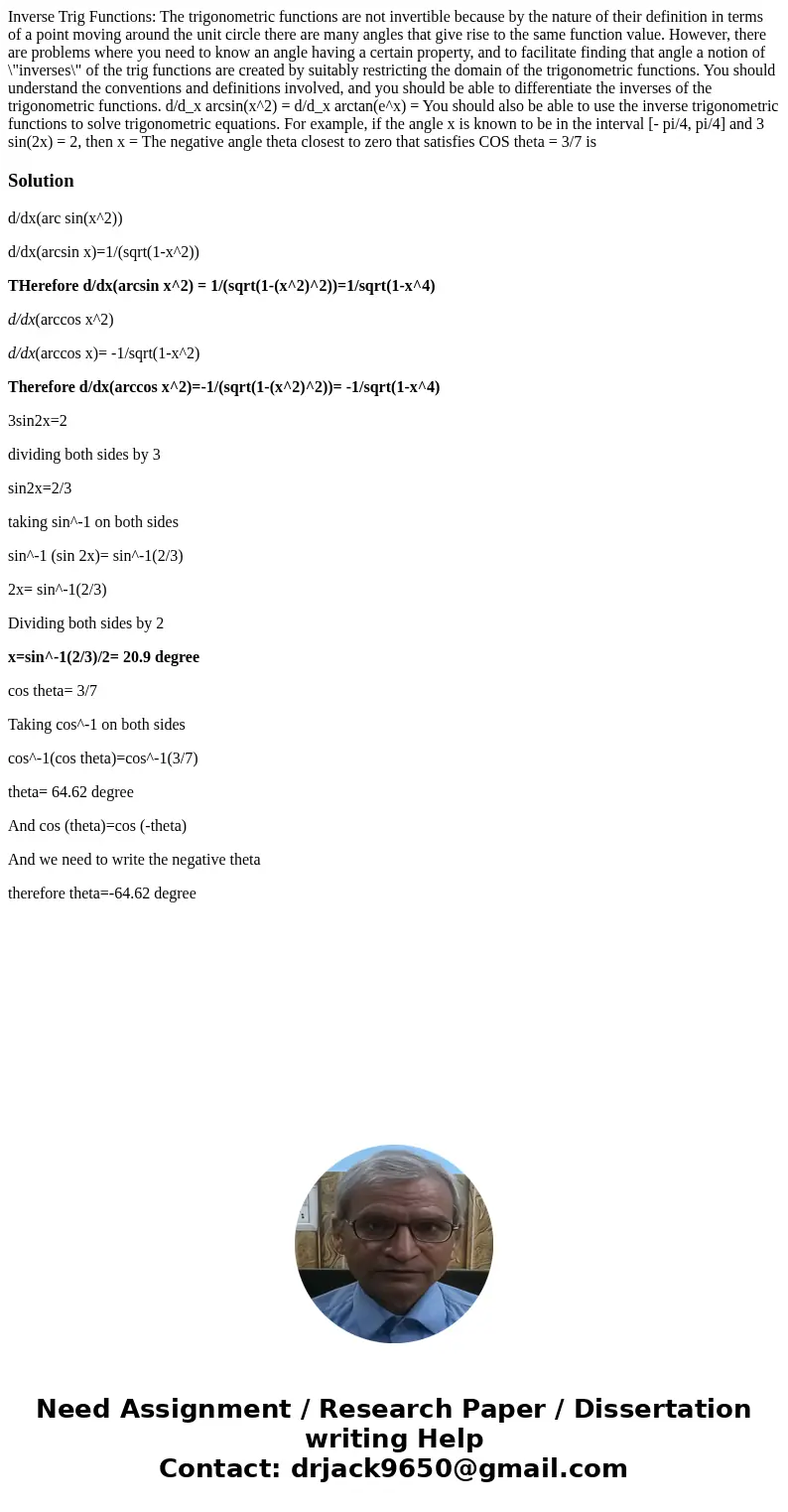Inverse Trig Functions The trigonometric functions are not i
Inverse Trig Functions: The trigonometric functions are not invertible because by the nature of their definition in terms of a point moving around the unit circle there are many angles that give rise to the same function value. However, there are problems where you need to know an angle having a certain property, and to facilitate finding that angle a notion of \"inverses\" of the trig functions are created by suitably restricting the domain of the trigonometric functions. You should understand the conventions and definitions involved, and you should be able to differentiate the inverses of the trigonometric functions. d/d_x arcsin(x^2) = d/d_x arctan(e^x) = You should also be able to use the inverse trigonometric functions to solve trigonometric equations. For example, if the angle x is known to be in the interval [- pi/4, pi/4] and 3 sin(2x) = 2, then x = The negative angle theta closest to zero that satisfies COS theta = 3/7 is 
Solution
d/dx(arc sin(x^2))
d/dx(arcsin x)=1/(sqrt(1-x^2))
THerefore d/dx(arcsin x^2) = 1/(sqrt(1-(x^2)^2))=1/sqrt(1-x^4)
d/dx(arccos x^2)
d/dx(arccos x)= -1/sqrt(1-x^2)
Therefore d/dx(arccos x^2)=-1/(sqrt(1-(x^2)^2))= -1/sqrt(1-x^4)
3sin2x=2
dividing both sides by 3
sin2x=2/3
taking sin^-1 on both sides
sin^-1 (sin 2x)= sin^-1(2/3)
2x= sin^-1(2/3)
Dividing both sides by 2
x=sin^-1(2/3)/2= 20.9 degree
cos theta= 3/7
Taking cos^-1 on both sides
cos^-1(cos theta)=cos^-1(3/7)
theta= 64.62 degree
And cos (theta)=cos (-theta)
And we need to write the negative theta
therefore theta=-64.62 degree

 Homework Sourse
Homework Sourse